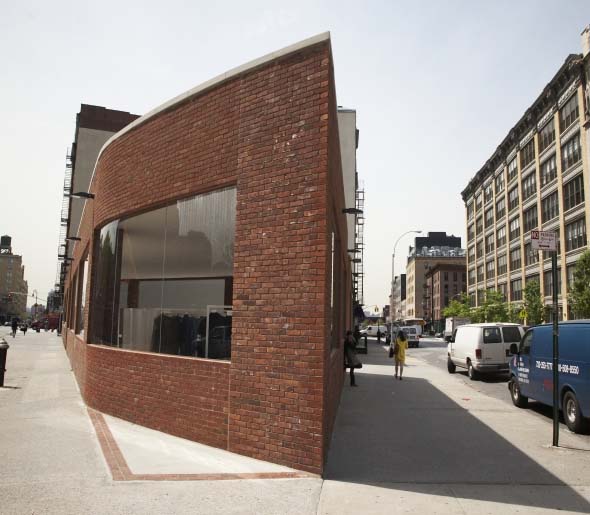Trending
The unwrapping of One Gansevoort Street
In one of the better publicity stunts to grace the recent annals of architecture, the upscale, avant-garde Japanese clothing designer Yohji Yamamoto decided to keep his new shop in the Meatpacking District quite literally under wraps until it was finally ready for its close-up.
For the work at hand he engaged the firm junya.ishigami+associates to design a building whose specific nature was a well-kept secret. For much of this past fall, all that could be seen as one came upon the triangular intersection of Gansevoort, Hudson and West 13th streets, was a billowy, luminous cocoon of plastic sheets and wooden struts that completely engulfed what was rumored to lie beneath.
This temporary structure looked simultaneously like a parody of several Frank Gehry structures, not least the IAC Building in Chelsea with its billowing-sails-like facade, and a kind of Japanese bean pastry known as namagashi.
But the creature that has now emerged from this cocoon at One Gansevoort Street looks nothing like what was promised by the mod, organic structure that had once embraced it. Rather, it is a revamped version of a sharply angled one-story structure that had been, in past lives, an industrial shop and then a modeling agency.
The greatest change that the architect wrought upon the existing structure was to slice it quite in half, with the eastern third, an irregular triangle, serving as a show room, while the western remainder was given over to storage and administrative offices.
The exterior of this plain brick building has little in the way of ornament, other than small metal light fixtures interspersed between the strip windows that account for much of the facade. What might otherwise be tedious becomes jolting in virtue of the bracing angularity of the building on various sides. Indeed, it is so pointy that one almost feels one could cut oneself by turning its corners too abruptly.
As for the interior, it too is almost entirely lacking in ornament, but, like many another space for fashion and art on the far West Side of Manhattan, it has been conceived as a zone of antiseptic whiteness that feels very different from the industrial red brick of the exterior, and far more rarefied.
James Gardner, formerly the architecture critic of the New York Sun, writes on the visual arts for several publications.
 |




